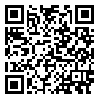Mon, Dec 8, 2025
[Archive]
Volume 9, Issue 4 (November 2022)
IJML 2022, 9(4): 262-271 |
Back to browse issues page
Download citation:
BibTeX | RIS | EndNote | Medlars | ProCite | Reference Manager | RefWorks
Send citation to:



BibTeX | RIS | EndNote | Medlars | ProCite | Reference Manager | RefWorks
Send citation to:
Shahriary S, Farashahi Yazd E, Hajizadeh-Tafti F, Akyash F, Aflatoonian B. Induced Chondrogenic Differentiation of hESCs by hESC-Derived MSCs Conditioned Medium and Sequential 3D-2D Culture System. IJML 2022; 9 (4) :262-271
URL: http://ijml.ssu.ac.ir/article-1-461-en.html
URL: http://ijml.ssu.ac.ir/article-1-461-en.html
Shayesteh Shahriary 

 , Ehsan Farashahi Yazd
, Ehsan Farashahi Yazd 

 , Fatemeh Hajizadeh-Tafti
, Fatemeh Hajizadeh-Tafti 

 , Fatemeh Akyash
, Fatemeh Akyash 

 , Behrouz Aflatoonian *
, Behrouz Aflatoonian * 




 , Ehsan Farashahi Yazd
, Ehsan Farashahi Yazd 

 , Fatemeh Hajizadeh-Tafti
, Fatemeh Hajizadeh-Tafti 

 , Fatemeh Akyash
, Fatemeh Akyash 

 , Behrouz Aflatoonian *
, Behrouz Aflatoonian * 


Stem Cell Biology Research Center, Yazd Reproductive Sciences Institute, Shahid Sadoughi University of Medical Sciences, Yazd, Iran.
Abstract: (1036 Views)
Background and Aims: It has been proven that human mesenchymal stem cells (MSCs) conditioned medium (hMSCs-CM) can influence human embryonic stem cells (hESCs) chondrogenic differentiation. In this study, we hypothesized that conditioned medium (CM) from hESCs-derived MSCs in a sequential 3D-2D culture system could facilitate the induction of chondrogenesis in hESCs.
Materials and Methods: CM was collected from Yazd2 (hESCs; 46, XY) derived MSCs confluent cultures and stored at -20 °C. Yazd4 hESC line (46, XX) was induced for differentiation using EB formation as 3D culture into SD (spontaneously differentiation) and CM groups (differentiation using conditioned medium) for four days. Cell culture continued in a 2D (monolayer) culture system for both groups till day 14. Ultimately, chondrogenic differentiation was assessed by Alcian blue and masson′s trichrome staining at 4 and 14 days of differentiation, and quantitative real-time polymerase chain reaction (PCR) for NANOG, MEOX1, SOX5, SOX6, SOX9, ACAN, COL2A1 and RUNX2 genes for SD and CM groups on days 0 and 4.
Results: The gene expression profile for chondrogenic genes in the CM group was significantly more than the SD group (p< 0.05). Furthermore, chemical staining assessment illustrated a significant GAG and collagen II difference between the CM and SD groups at days 4 and 14 (p< 0.05).
Conclusions: Our findings would pave the way for creating an in vitro human chondrogenesis model for further studies in the developmental biology of articular cartilage tissue, which lend itself to cell-based therapy to cure joint diseases such as osteoarthritis.
Materials and Methods: CM was collected from Yazd2 (hESCs; 46, XY) derived MSCs confluent cultures and stored at -20 °C. Yazd4 hESC line (46, XX) was induced for differentiation using EB formation as 3D culture into SD (spontaneously differentiation) and CM groups (differentiation using conditioned medium) for four days. Cell culture continued in a 2D (monolayer) culture system for both groups till day 14. Ultimately, chondrogenic differentiation was assessed by Alcian blue and masson′s trichrome staining at 4 and 14 days of differentiation, and quantitative real-time polymerase chain reaction (PCR) for NANOG, MEOX1, SOX5, SOX6, SOX9, ACAN, COL2A1 and RUNX2 genes for SD and CM groups on days 0 and 4.
Results: The gene expression profile for chondrogenic genes in the CM group was significantly more than the SD group (p< 0.05). Furthermore, chemical staining assessment illustrated a significant GAG and collagen II difference between the CM and SD groups at days 4 and 14 (p< 0.05).
Conclusions: Our findings would pave the way for creating an in vitro human chondrogenesis model for further studies in the developmental biology of articular cartilage tissue, which lend itself to cell-based therapy to cure joint diseases such as osteoarthritis.
Type of Study: Research |
Subject:
Genetics/ Biotechnology
Received: 2022/08/28 | Accepted: 2022/12/14 | Published: 2022/12/31
Received: 2022/08/28 | Accepted: 2022/12/14 | Published: 2022/12/31
Send email to the article author
| Rights and permissions | |
 |
This work is licensed under a Creative Commons Attribution-NonCommercial 4.0 International License. |




